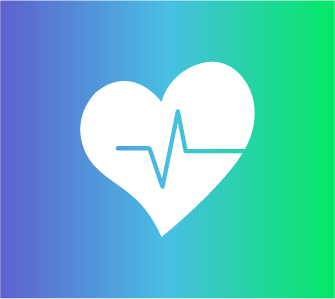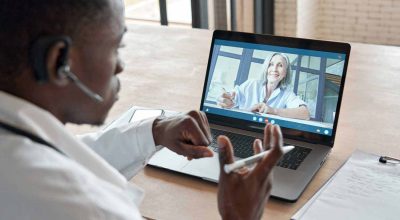Even before COVID, there was a large push towards telehealth services and increased access for remote diagnostics. Now more than ever, patients are wanting to avoid crowded, slow waiting rooms and see their doctor—as much as possible—on their time, without leaving home. This is great for you too, because it allows you to cut down on overhead and to see more patients. And for those that need an in-person visit, you can always schedule that as well.
But what does it really feel like to be a remote physician? How does one practice medicine when you often never see your patient in person? What does your day look like and what tools does it require to be a telehealth professional?
Let’s take a look at the key points of remote physician work, how it benefits you and your clients, and how your practice can change to reap the benefits of this new and constantly evolving technology.

What is Telehealth?
Telehealth is more than just Skyping with your patients. A well-established telehealth service is an integrated platform that allows you to assess your patient’s conditions remotely. This includes coaching them in taking certain biometric data but also using AI-learning algorithms that can help you pinpoint a diagnosis through careful machine reading of their medical history, current symptoms, medications, and all other pertinent data available.
Telehealth is also about screening incoming clients through a process that’s more in-depth and useful than just filling out paperwork in the lobby. Imagine a scenario where, while they’re waiting, the patient can complete their information and it’s evaluated in real-time, allowing them to be sent to a physician with a better understanding of their potential conditions. This frees up your time and your patient’s, making for a better experience all around.
Additionally, this type of platform can help you get patients to specialists far more quickly than traditional models. By seamlessly integrating the referral process, and facilitating your patient being seen more quickly via remote visits, you cut down the wasted time and get faster practical healing. Better patient outcomes are directly correlated with reduced waiting time, and a telehealth model reduces time dramatically.
If a patient needs to be seen in person, it’s extremely simple to facilitate that. When all of the initial visit and intake is already done remotely, scheduling time for them to come in is far easier and faster. When you’re not spending a tremendous amount of time each day seeing patients only to have them come back again, you reduce time between patients and your overall investment of busywork.
How does Telehealth affect physicians?
Imagine you see fifteen patients in a given time period, and only about half of them would really benefit from your speciality. The others must be referred to a nephrologist, a dermatologist, and a podiatrist. Your process of intake and seeing them, while not wasted, is more like an extra step in getting them the direct care that they need.
Telehealth can cut that amount of time down by making the intake process more useful, analyzing data immediately and getting patients to a relevant telehealth professional within your network. Why add an extra visit when you don’t need to, and why waste precious time in treatment? With only pre-vetted patients coming to your office, you know that you will be able to serve them better and their outcomes will be improved. This also frees up more time to see more patients, increasing your overall revenue, and giving you more time to treat your clients.
Because of the pandemic, there is another beautiful side to telehealth: less exposure to COVID-19 for you and your patients. While doctor’s offices are changing their practices, creating more space, having patients wait in their cars, etc, telehealth helps circumvent all of that by making your visits remote. This is safer for you, your staff, and your patients, and allows you to see only those critical care patients who need to be seen in-person.
Remote physicians also have the ability to better structure their day. There is less lag time between patients because so much work is done with the intake that would otherwise add time to each visit. Diagnostics, history, and symptoms are all easily analyzed and presented by your telehealth platform, taking a good measure of time off each patient’s visit, helping physicians stay focused on helping them feel better.
Additional benefits of a well-formulated telehealth platform
Working with a telehealth platform like ViTel gives you better access to patient data through our secure, HIPAA-compliant servers. This allows you to securely share patient data with other medical professionals and access it quickly. Additionally:
- We offer a robust network of peripheral companies, including diagnostic, supplies, and credentialing
- Reduced referral time and a large network of specialists means better, faster treatment for your patients
- Streamlined billing and payor communication
- Seamless transition to full telehealth or telehealth-in-addition to a regular practice
ViTel is changing the way physicians see telehealth services. As the industry continues to advance and grow, and as demand for a remote doctor visit develops, we are helping physicians change and grow with this industry. Our free demo can show you how effective and beneficial telehealth can be to your practice and your patients. We’re ready and waiting to show you!







